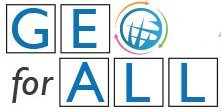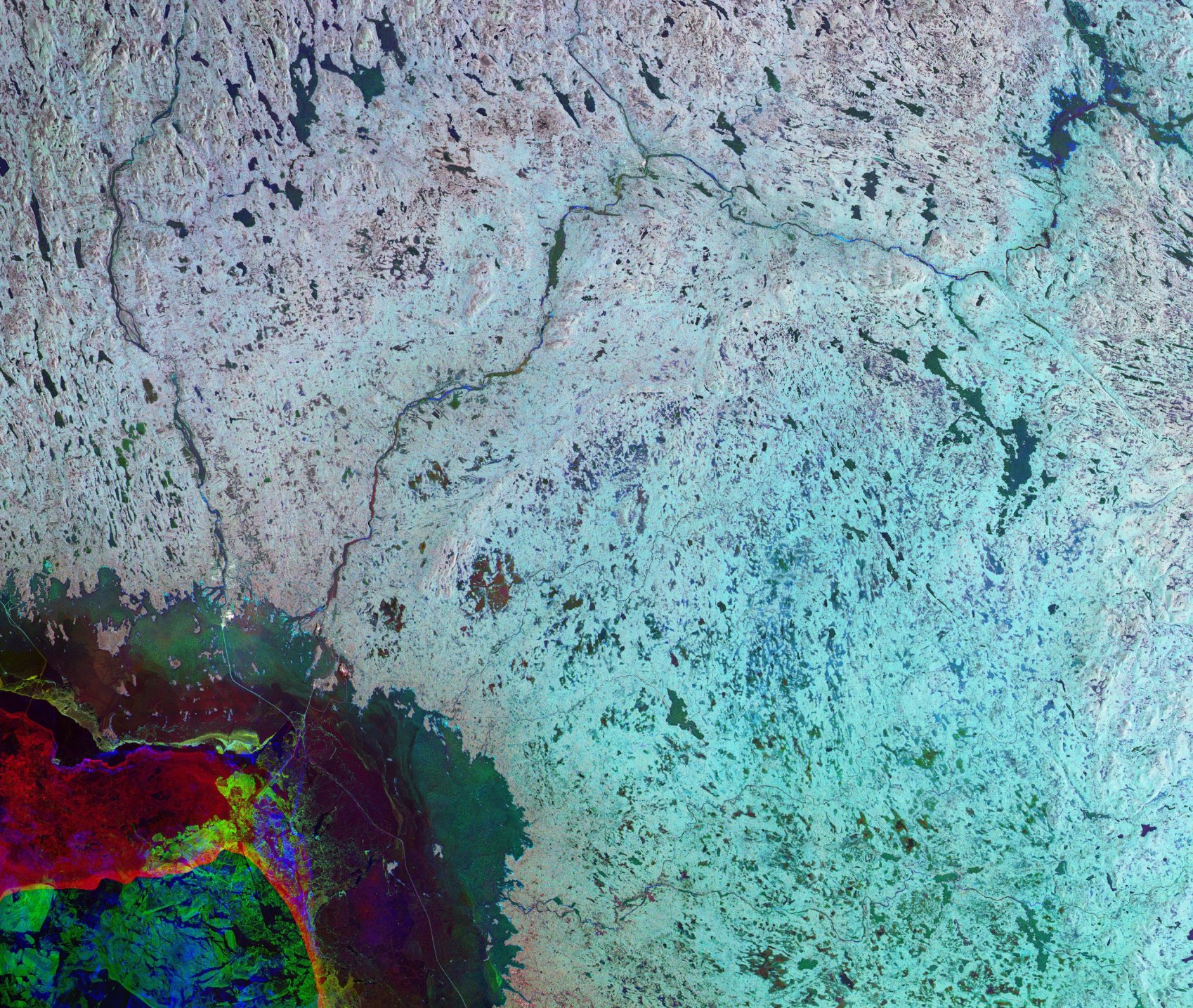La missione Copernicus Sentinel-1 ci porta sulla Lapponia, la regione più vasta e più settentrionale della Finlandia, giusto in tempo per il Natale.
Geograficamente collocata all’interno del Circolo Polare Artico, la Lapponia - che è chiamata Sápmi dalla popolazione Sami - si estende attraverso la Norvegia settentrionale, la Svezia, la Finlandia e nella penisola di Kola in Russia. E’ limitata ad ovest dal Mar di Norvegia, a nord dal Mare di Barents e dal Mar Bianco ad est.
Durante i mesi invernali Lapponia vuol dire nevicate, temperature basse sotto lo zero e Luci del Nord – anche dette Aurora Boreale – che illuminano il buio dei cieli notturni. Rovaniemi, la capitale della Lapponia, si trova nella parte più alta dell’immagine ed è considerata ufficialmente la città di residenza di Babbo Natale.
A Rovaniemi il Circolo Polare Artico corre attraverso il Villaggio di Santa Claus, situato otto chilometri a nord del centro della città. Il Circolo Polare Artico delimita la latitudine più meridionale rispetto alla quale il Sole può trovarsi sotto o sopra l’orizzonte continuativamente per 24 ore: questi fenomeni sono noti come Sole di Mezzanotte (in estate) e come Notte Polare (in inverno).
Questa immagine combina tre acquisizioni radar della missione Copernicus Sentinel-1 per mostrare i mutamenti nel tempo delle condizioni del suolo. La prima immagine è del 28 febbraio 2019 e ad essa è associato il colore verde, la seconda è del 11 marzo ed ha associato il rosso, infine la terza è del 04 aprile e mostra i cambiamenti in blu.
I cambiamenti che si sono verificati nel tempo in questo territorio sono in gran parte visibili nella parte inferiore sinistra dell'immagine, dove il ghiaccio marino nel Golfo di Bothnia è di fatto scivolato lungo la costa. Il Golfo di Bothnia, il braccio più settentrionale del Mar Baltico, è situato tra la costa occidentale della Finlandia e sotto la costa orientale della Svezia. Giacchè esso riceve acqua da numerosi fiumi - inclusi i fiumi Torne e Kemijoki che sono visibili nell’immagine – la sua salinità è estremamente bassa e la copertura di ghiaccio durante l’inverno si mantiene anche fino a cinque mesi.
Sono presenti molte piccole isole, che rendono la navigazione nel golfo difficoltosa. Per questa ragione le imbarcazioni in navigazione nel golfo ricevono assistenza rompighiaccio durante i loro viaggi attraverso le acque coperte da ghiaccio, seguendo rotte rettilinee che facilitano la loro navigazione. Si possono osservare line rette in partenza dai porti di Röyttä e di Ajos.
In qualità di missione radar avanzata Copernicus Sentinel-1 può produrre immagini della superficie della Terra vedendo attraverso nubi e pioggia e sia di notte che di giorno. Questa caratteristica la rende una missione ideale per monitorare aree spesso nascoste dall’oscurità, come le regioni polari.
Scarica immagine MediumRes (30,37 MB - .JPG)
Scarica immagine HighRes (66,0 MB - .TIF)
---
Rovaniemi, Lapland
The Copernicus Sentinel-1 mission takes us over Lapland, the largest and northernmost region of Finland, just in time for Christmas.
Located within the Arctic Circle, Lapland, also called Sápmi by the Sami people, stretches across northern Norway, Sweden and Finland, and into the Kola Peninsula of Russia. It is bound by the Norwegian Sea on the west, the Barents Sea on the north, and the White Sea to the east.
Lapland during the winter months means snowfall, temperatures well below zero degrees and the Northern Lights, or the Aurora Borealis, lighting up the dark, night skies. Rovaniemi, the capital of Lapland, lies at the top of the image, and is considered the official hometown of Santa Claus.
In Rovaniemi, the Arctic Circle runs through Santa Claus Village, located eight kilometres north of the city centre. The Arctic Circle marks the southernmost latitude where the sun can stay continuously below or above the horizon for 24 hours – these phenomena are known as the Midnight Sun in the summer and the Polar Night in the winter.
This image combines three radar acquisitions from the Copernicus Sentinel-1 mission to show changes in land conditions over time. The first image from 28 February 2019 is associated with green, the second from 11 March is linked to red, and the third from 04 April depicts changes in blue.
The changes that took place over time in this image are largely seen in the bottom-left of the image, where sea ice in the Gulf of Bothnia has shifted substantially along the coast. The Gulf of Bothnia, the northernmost arm of the Baltic Sea, is situated between Finland’s west coast and Sweden’s east coast. As it receives the water of so many rivers, including the Torne and Kemijoki rivers visible in the image, its salinity is extremely low, and ice cover is maintained for up to five months during the winter.
There are many small islands, making navigation in the gulf difficult. For this reason, vessels travelling in the gulf receive icebreaker assistance on their journey in the ice-covered waters, and follow the straight lines easing their navigation. Straight lines can be seen coming from the Port of Röyttä and the Port of Ajos.
As an advanced radar mission, Copernicus Sentinel-1 can image the surface of Earth through cloud and rain and regardless of whether it is day or night – making it an ideal mission to monitor areas often shrouded in darkness like the polar regions.
(Fonte: ESA - Image of the week: "Rovaniemi, Lapland". Traduzione: Gianluca Pititto)
Copia qui lo "short link" a questo articolo
www.geoforall.it/{sh404sef_shurl}




